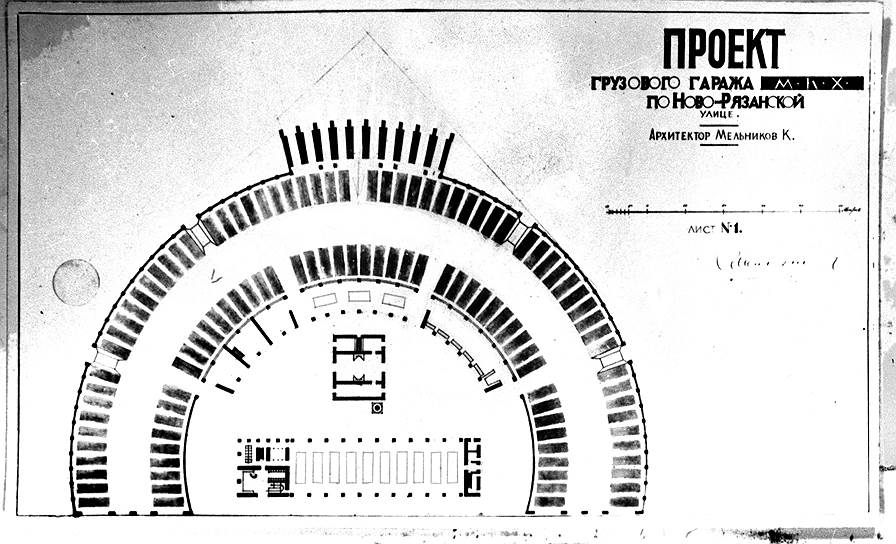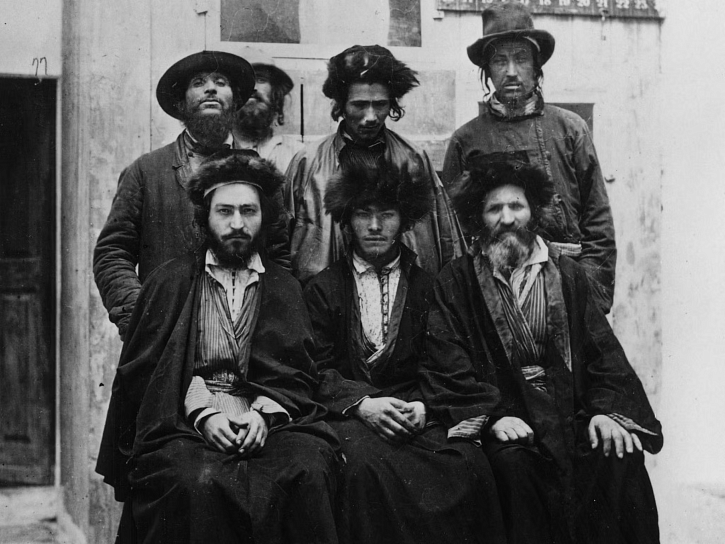The prerequisite for the construction of the garage, which has become iconic for Moscow, was regular bus navigation around the city, launched in 1924. To achieve this, Moscow Public Utilities purchased the first batch of Leyland buses from the UK, running on the historical first “dacha” line; within three years there were 16 transport lines, and the city bus fleet increased to 130 vehicles!
The rapidly growing transport system gave rise to a completely new type of urban architecture - garage construction with a “pattern” arena-type project developed at that time. The plastic revolution of Konstantin Melnikov is the rejection of the model used, in exchange for which the architect put forward a fundamentally new architectural plan in the form of a giant parallelogram extended from East to West, making it possible to park buses in one row at an angle to each other. This made it possible to freely exit vehicles without using the then-unavailable reverse gear. The project of an architect who had recently returned from Paris, whose wooden pavilion at the Exhibition of Modern and Architectural Industry (1925) created a real sensation, was approved after an examination, and from that moment the almost century-long history of the Bakhmetyevsky garage began.
Following the functional needs of the building, Konstantin Melnikov developed different architectural solutions that meet each of the four facades in a utilitarian way, designed six central entrances-ports resembling an open book, marked with a unique author's font.
To create metal structures inside a colossal garage - more than 8500 sq.m. – the architect personally turned to the living classic of engineering – Vladimir Shukhov, who came up with and implemented a visually light, “openwork” design of a three-nave space supporting a giant garage roof with the help of 18 elegant columns and only the necessary minimum of metal structures. The result of the union of two geniuses was the Bakhmetyevsky Garage, which transcended the boundaries of functional urban development - a monument of constructivism, with its scale, innovative plastic ideas and history, endowed with cult significance for the entire architecture of the Russian avant-garde.
Alas, the fate of many architectural masterpieces also awaited the Bakhmetyevsky bus depot, whose disrepair by the end of the twentieth century put the buildings in danger of extinction. In 2002, the Jewish community, to which the city authorities had transferred the garage premises for free use a year earlier, initiated large-scale restoration work under the leadership of the architectural bureau of Alexei Vorontsov. The result of a phased and delicate restoration with maximum attention to unlost historical details was the preservation of the building's internal layout, partial plaster finishing, and the main entrances from the eastern facade in their original form. All this allows us to talk about the revival of the Bakhmetyevsky garage, which has regained its former architectural grandeur and has become home to the modern, high-tech cultural and educational complex of the Jewish Museum and Tolerance Center.

